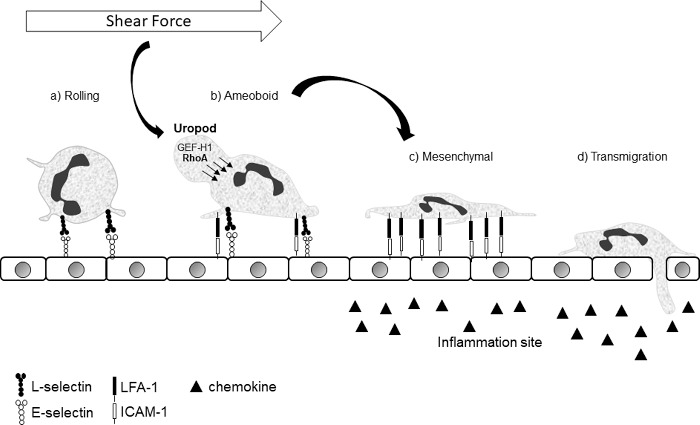Figure 1.

Crawling neutrophils can have an amoeboid or mesenchymal morphology. Neutrophils roll on the endothelial surface (a) until they encounter the right combination of pro-inflammatory signals to induce adhesion. Once adherent, they are able to crawl in a partly rounded up amoeboid (b) or a spread out mesenchymal (c) mode. In the amoeboid mode they are more exposed to shear forces, which results in GEF-H1 activation/dephosphorylation and relocalization to the uropod, where it promotes Rho-induced contractility. Contractile squeezing of the uropod to push the cytosol down and forward, in combination with strongly anchored integrins, will promote cell flattening. The impetus to promote the transition from (b) to (c) in the context of shear force is biologically coherent.
